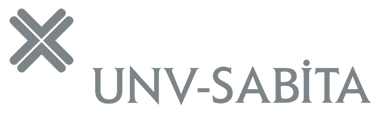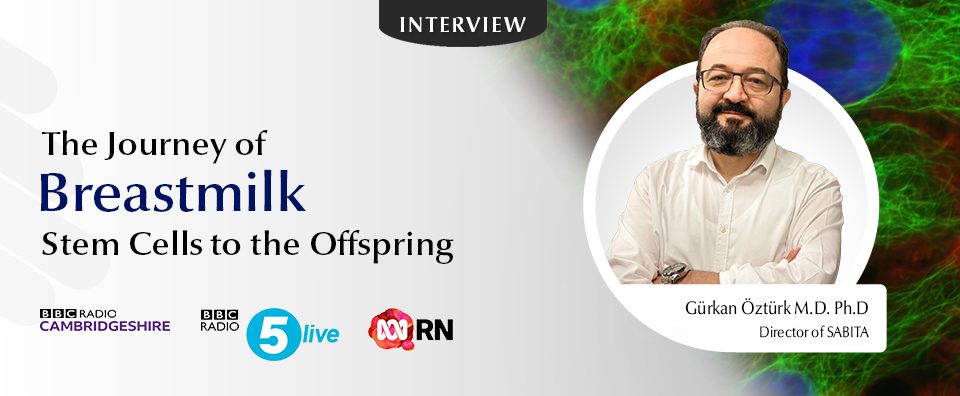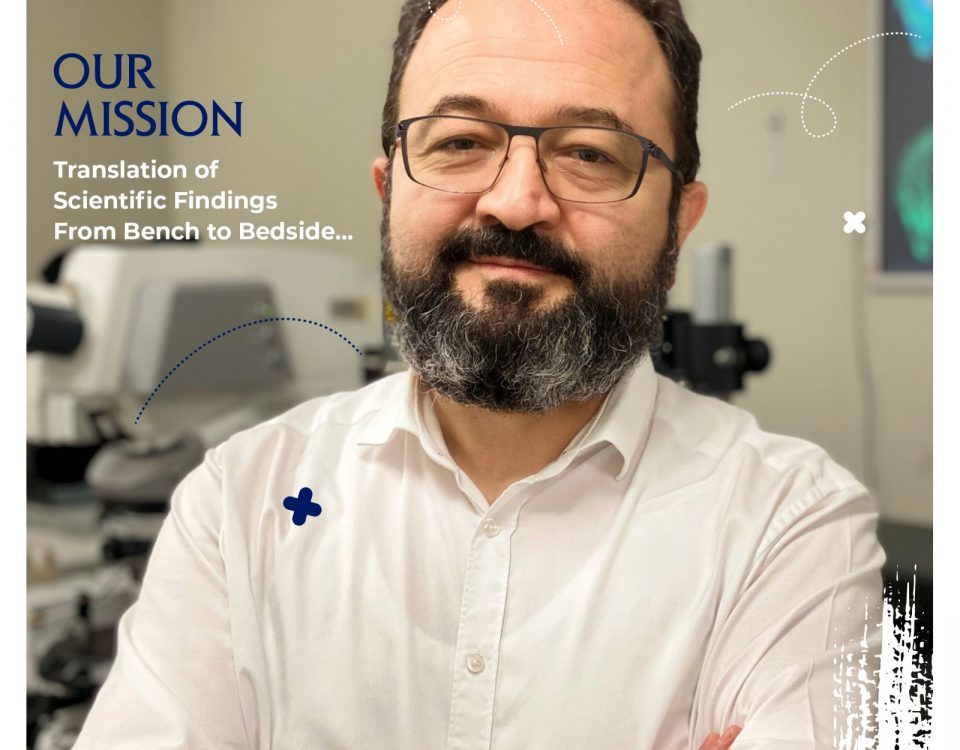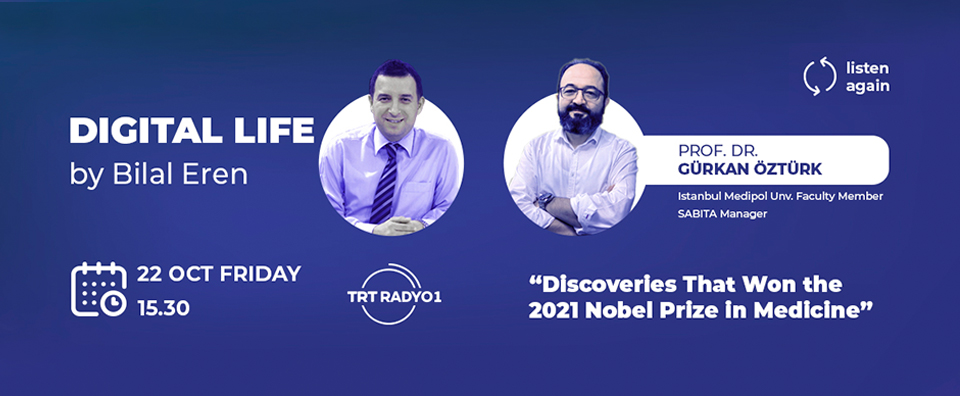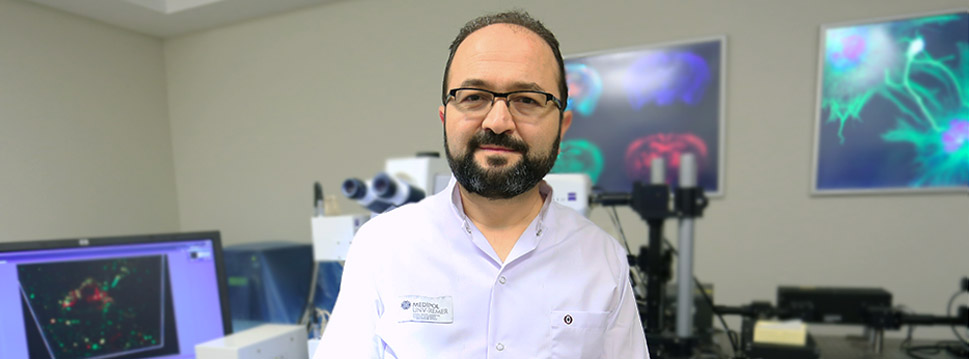
Prof. Dr. Gürkan Öztürk
[email protected]He obtained graduate degree from Hacettepe Medical School in 1993 as medical doctor. He was in the UK between 1995-1999 to do PhD in physiology at King’s College London. After receiving the Ph.D. degree Dr. ÖztÜrk returned Turkey and started to work as assistant professor in Yüzüncü Yıl University, Medical School, Van. In 2001 he established a centre for neuroscience where he would lead high impact research for about ten years. He was invited to join newly established Istanbul Medipol University in 2010 as full professor where he was given the responsibility to design research infrastructure. In 2012 he got a substantial governmental grant with which he directed establishment of “Regenerative and Restorative Medicine Research Center – REMER”. Later, with a follow-up grant he upgraded REMER to SABITA, a roof institute that currently harbors multiple research centers and facilities beside REMER. Dr. Öztürk is currently holding a faculty position in Physiology Department of the International School of Medicine. He is head of basic medicine science department and director of SABITA.
Selected Publications;
A Co-Culture-Based Multiparametric Imaging Technique to Dissect Local H2O2 Signals with Targeted HyPer7
Secilmis, M., et al., A Co-Culture-Based Multiparametric Imaging Technique to Dissect Local H2O2 Signals with Targeted HyPer7. Biosensors (Basel), 2021. 11(9).
Complexities of the Chemogenetic Toolkit: Differential mDAAOActivation by D-Amino Substrates and Subcellular Targeting
Erdogan, Y.C., et al., Complexities of the chemogenetic toolkit: Differential mDAAO activation by d-amino substrates and subcellular targeting. Free Radic Biol Med, 2021. 177: p. 132-142.
Evaluation of the Bilateral Cardiac Afferent Distribution at the Spinal and Vagal Ganglia by Retrograde Labeling
Akgul Caglar, T., et al., Evaluation of the bilateral cardiac afferent distribution at the spinal and vagal ganglia by retrograde labeling. Brain Res, 2021. 1751: p. 147201.
Neuroprotective Effects of Curcumin-Loaded Emulsomes in a Laser Axotomy-Induced CNS Injury Model.
Yilmaz, E.N., et al., Neuroprotective Effects of Curcumin-Loaded Emulsomes in a Laser Axotomy-Induced CNS Injury Model. Int J Nanomedicine, 2020. 15: p. 9211-9229.
Comparison of Protein Expression Profile of Limb Regeneration Between Neotenic and Metamorphic Axolotl
Sibai, M., et al., Comparison of protein expression profile of limb regeneration between neotenic and metamorphic axolotl. Biochem Biophys Res Commun, 2020. 522(2): p. 428-434.
Neurons from Human Mesenchymal Stem Cells Display Both Spontaneous and Stimuli Responsive Activity
Karakas, N., et al., Neurons from human mesenchymal stem cells display both spontaneous and stimuli responsive activity. PLoS One, 2020. 15(5): p. e0228510.
Expression of Pea3 Protein Subfamily Members in Hippocampus and Potential Regulation Following Neuronal Stimulation
Kandemir, B., et al., Expression of Pea3 protein subfamily members in hippocampus and potential regulation following neuronal stimulation. Neurosci Lett, 2020: p. 135348.
Preclinical Molecular Signatures of Spinal Cord Functional Restoration: Optimizing the Metamorphic Axolotl (ambystoma mexicanum) Model in Regenerative Medicine
Demircan, T., et al., Preclinical Molecular Signatures of Spinal Cord Functional Restoration: Optimizing the Metamorphic Axolotl (Ambystoma mexicanum) Model in Regenerative Medicine. OMICS, 2020. 24(6): p. 370-378.
Integrative Analysis of Axolotl Gene Expression Data from Regenerative and Wound Healing Limb Tissues
Sibai, M., et al., Integrative Analysis of Axolotl Gene Expression Data from Regenerative and Wound Healing Limb Tissues. Sci Rep, 2019. 9(1): p. 20280.
An In Vitro Model for Conditioning Lesion Effect
Kaval Oguz, E. and G. Ozturk, An In Vitro Model for Conditioning Lesion Effect. Cell Mol Neurobiol, 2019. 39(1): p. 61-71.
Longitudinal 16S rRNA Data Derived from Limb Regenerative Tissue Samples of Axolotl Ambystoma Mexicanum
Demircan, T., et al., Longitudinal 16S rRNA data derived from limb regenerative tissue samples of axolotl Ambystoma mexicanum. Scientific Data, 2019. 6(1): p. 70.
Bioinspired Scaffold Induced Regeneration of Neural Tissue
Altun, E., et al., Bioinspired Scaffold Induced Regeneration of Neural Tissue. European Polymer Journal, 2019.
The Neuroprotective Effects of Hypothermia on Bilirubin-Induced Neurotoxicity in Vitro
Kuter, N., et al., The Neuroprotective Effects of Hypothermia on Bilirubin-Induced Neurotoxicity in vitro. Neonatology, 2018. 113(4): p. 360-365.
Experimentally Induced Metamorphosis in Highly Regenerative Axolotl (Ambystoma Mexicanum) Under Constant Diet Restructures Microbiota
Demircan, T., et al., Experimentally induced metamorphosis in highly regenerative axolotl (ambystoma mexicanum) under constant diet restructures microbiota. Sci Rep, 2018. 8(1): p. 10974.
Transfer and Integration of Breast Milk Stem Cells to the Brain of Suckling Pups
Aydin, M.S., et al., Transfer and Integration of Breast Milk Stem Cells to the Brain of Suckling Pups. Sci Rep, 2018. 8(1): p. 14289.
Detailed Tail Proteomic Analysis of Axolotl (Ambystoma Mexicanum) Using an mRNA-Seq Reference Database
Demircan, T., et al., Detailed tail proteomic analysis of axolotl (Ambystoma mexicanum) using an mRNA-seq reference database. Proteomics, 2017. 17(1-2).
Identification of miRNA Profile and in-Silico Analysis of Identified miRNA’s Functions at Different Stages of Axolotl Tail Regeneration
Demircan, T., Identification of miRNA profile and in-silico analysis of identified miRNA’s functions at different stages of Axolotl tail regeneration. Haydarpasa Numune Training and Research Hospital Medical Journal, 2017.
Two Distinct Types of Dying Back Axonal Degeneration in Vitro
Ozturk, G., et al., Two distinct types of dying back axonal degeneration in vitro. Neuropathol Appl Neurobiol, 2013. 39(4): p. 362-76.
Enhancement of Cultured Adult Motor Neuron Survival with Cold Pre-incubation
Bektas S, Öztürk G. Enhancement of cultured adult motor neuron survival with cold pre-incubation, Neurosci Lett. 533:23-7 2013
Consequences of Neurite Transection in Vitro
Cengiz, N., et al., Consequences of neurite transection in vitro. J Neurotrauma, 2012. 29(15): p. 2465-74.
Related Posts;
Nisan 2, 2022
Nutritional properties of breast milk have been attracted the attention of humans for hundreds of years. Breastfeeding is accepted as one of the most important measures […]
